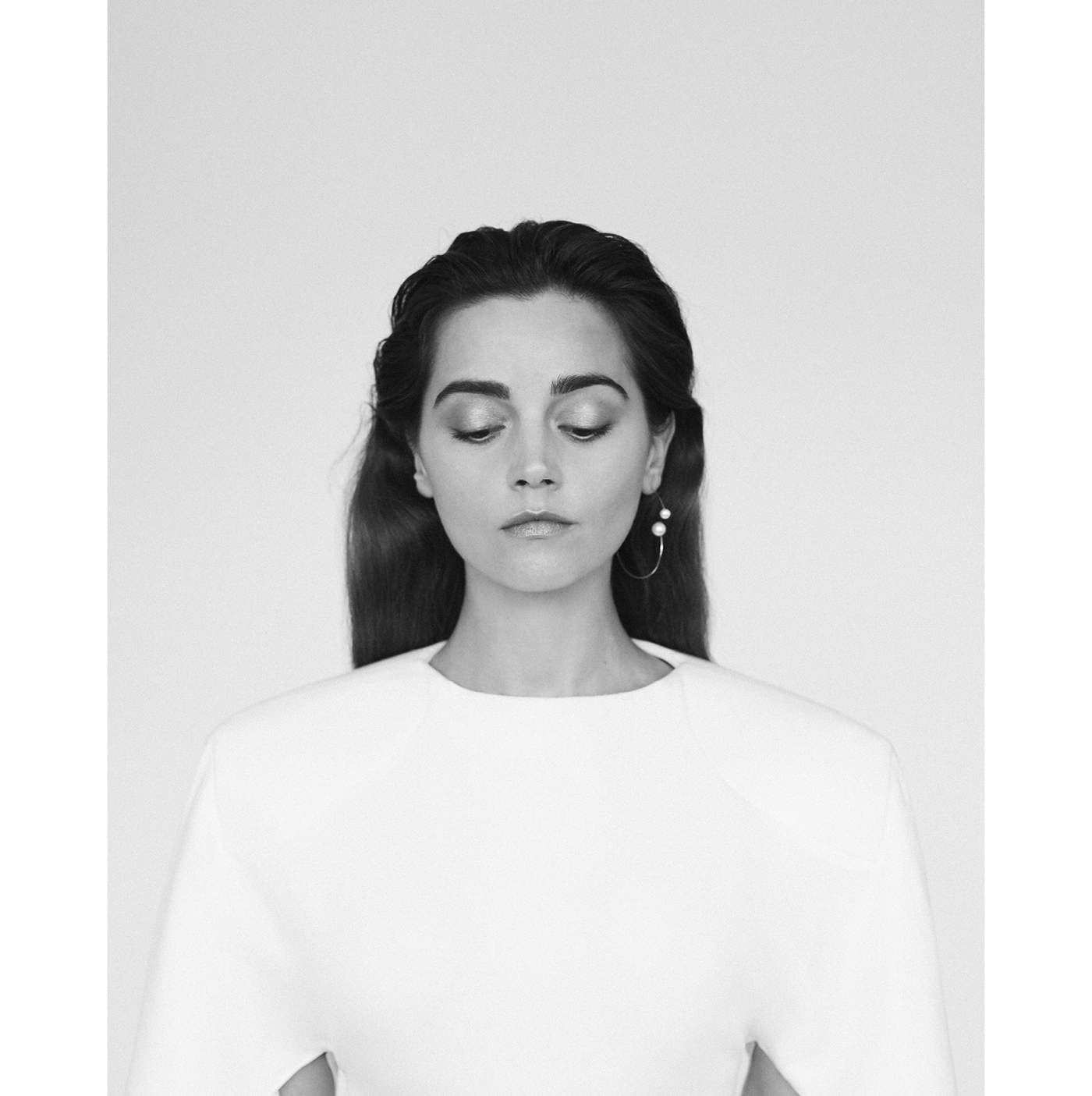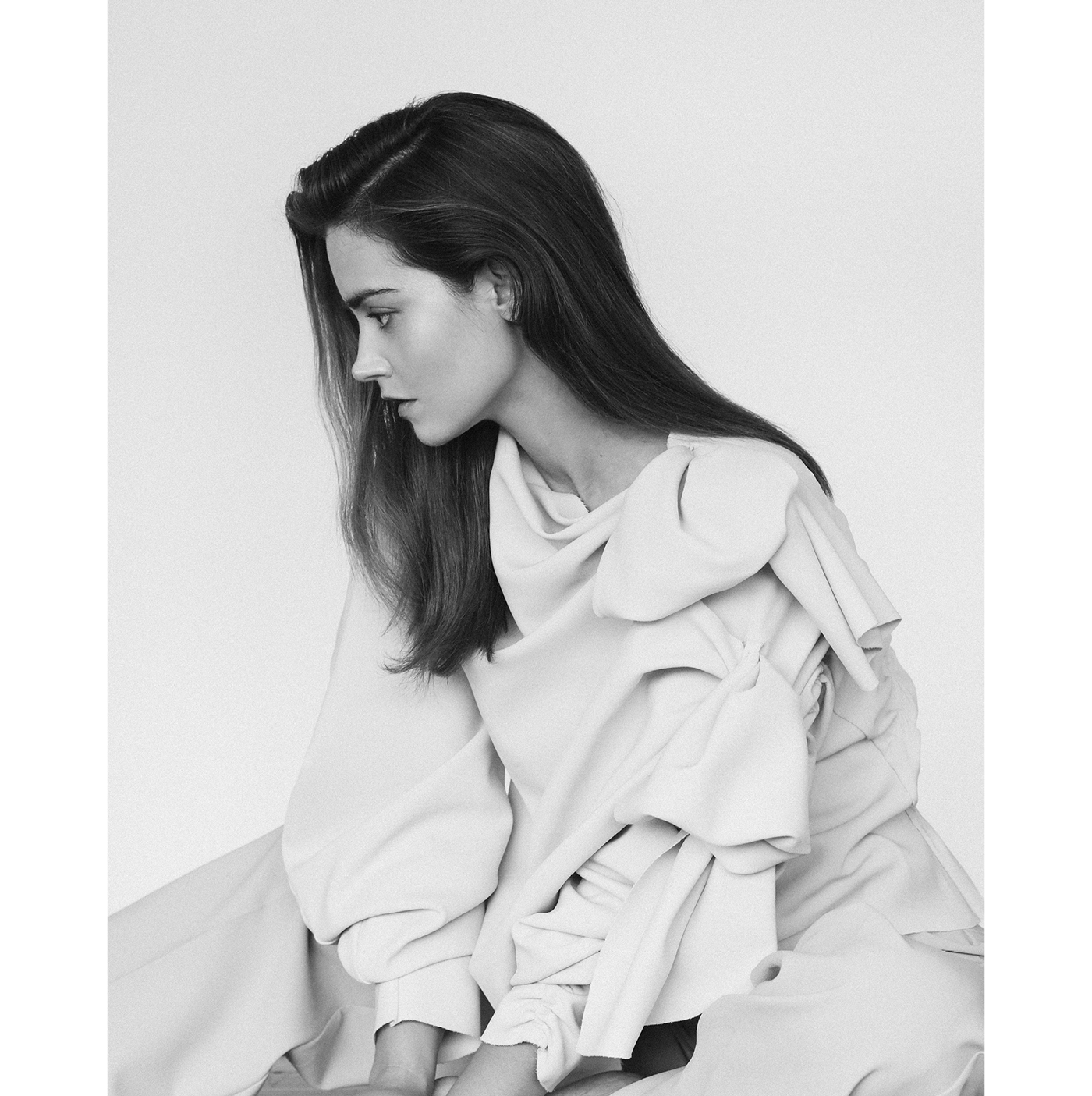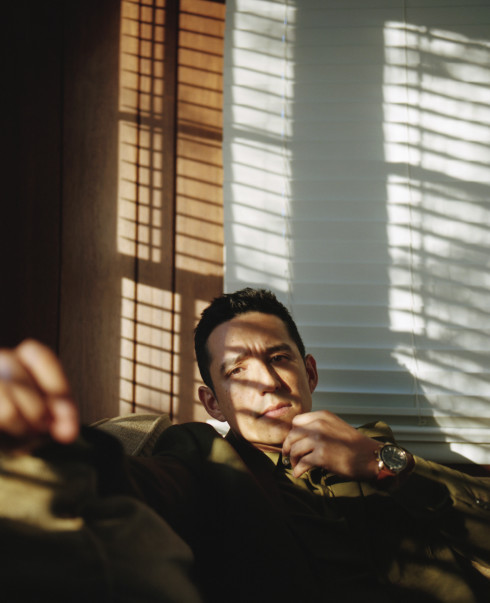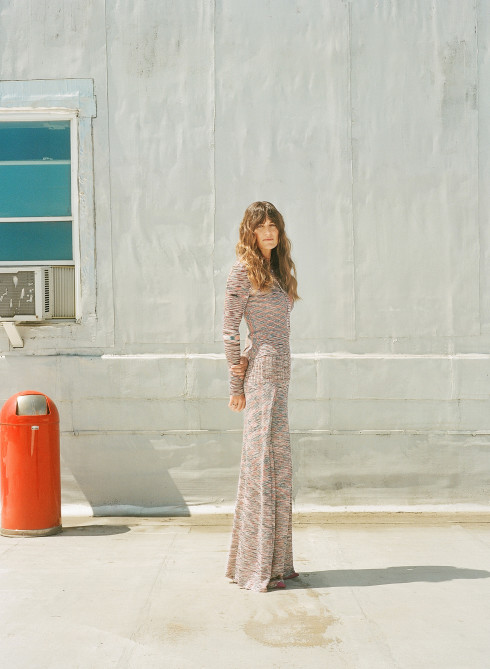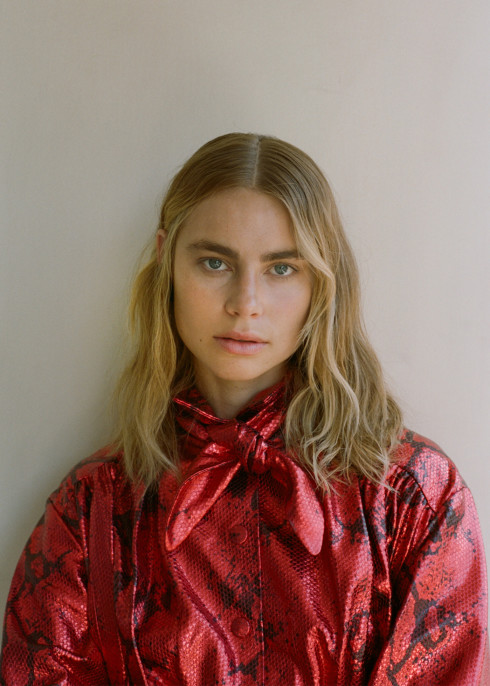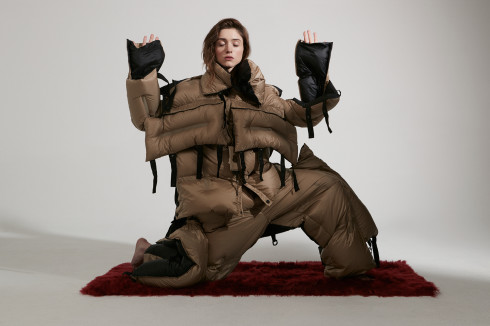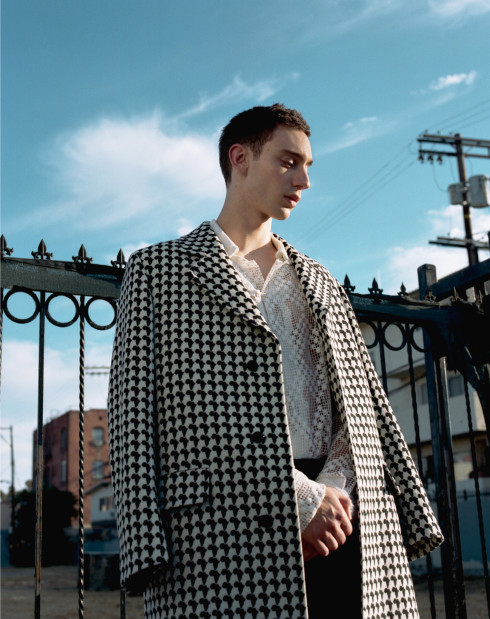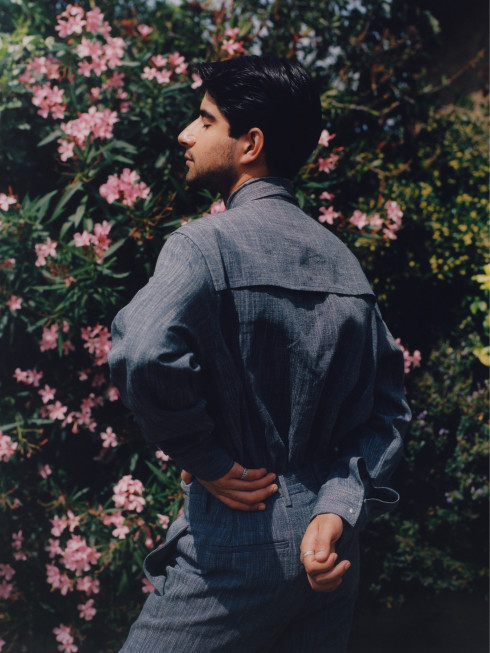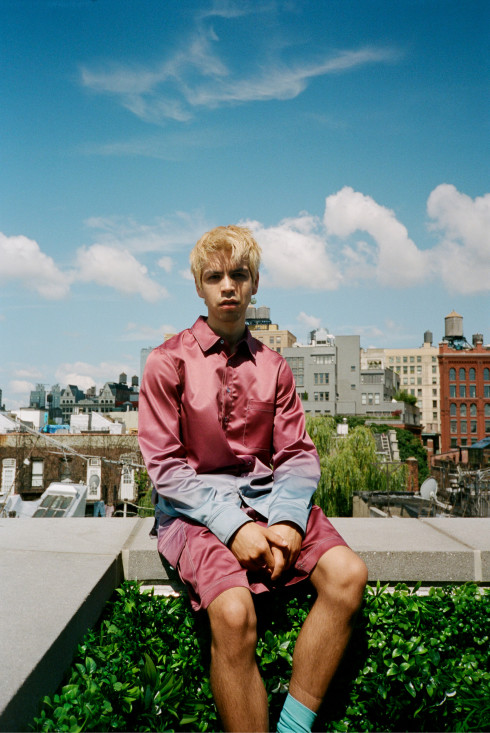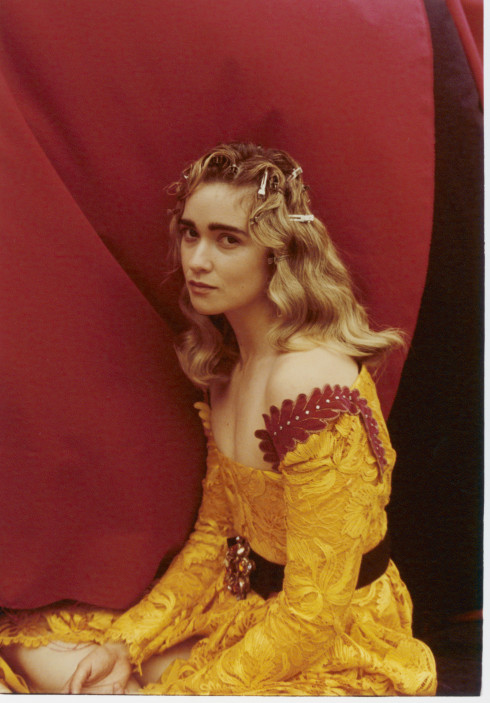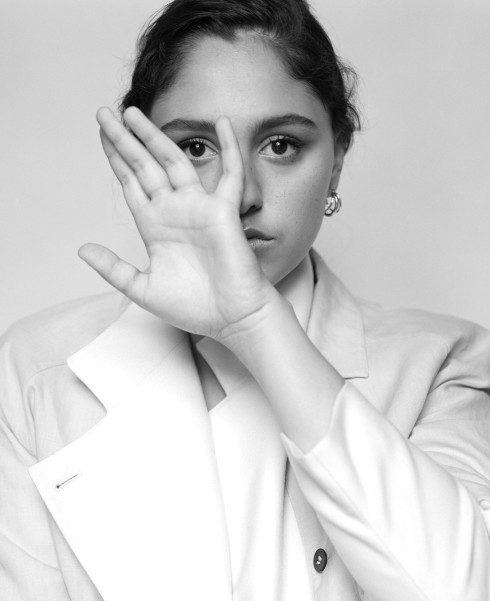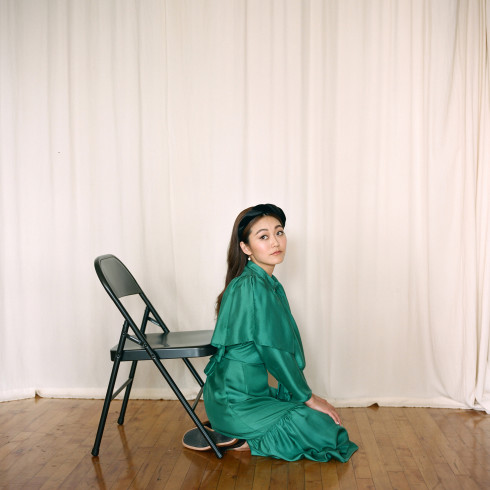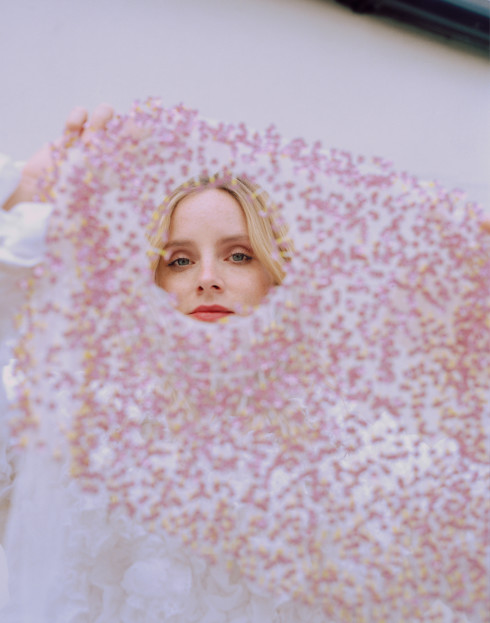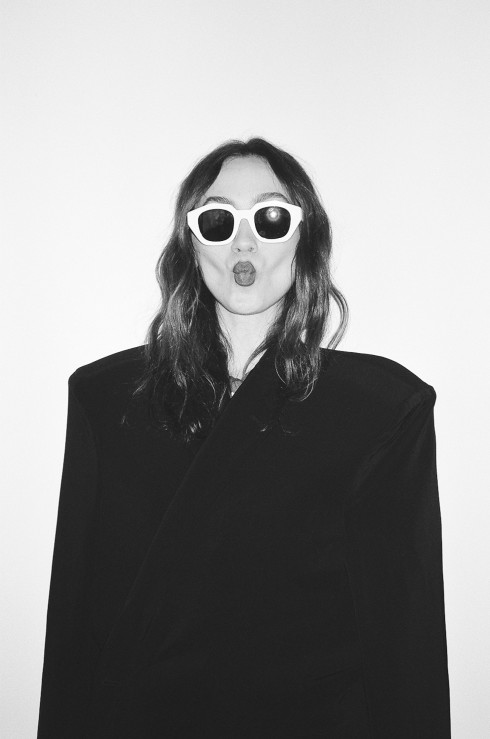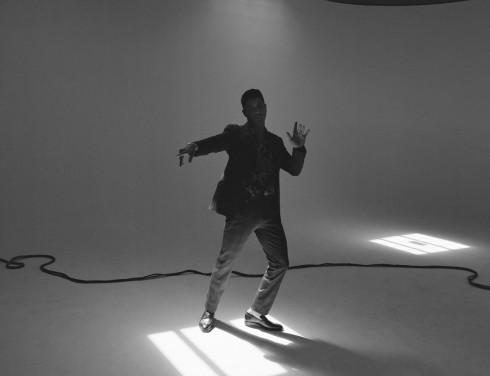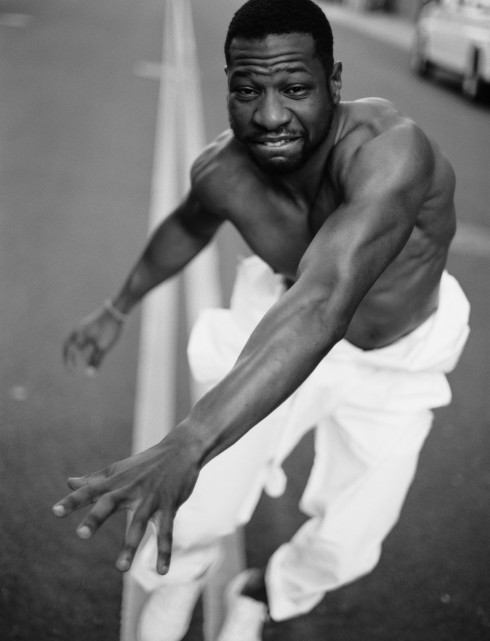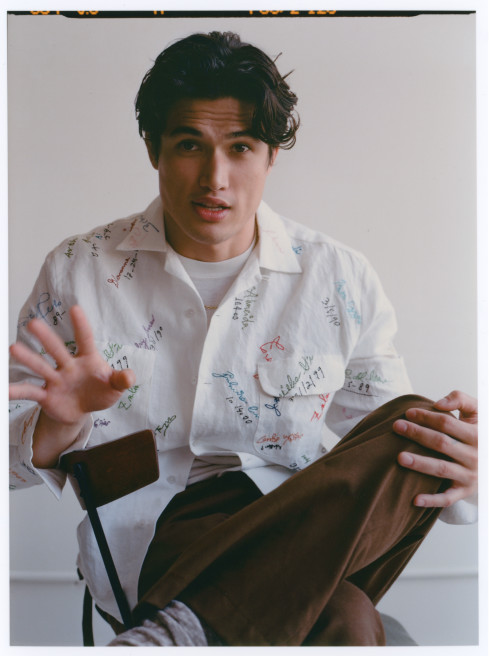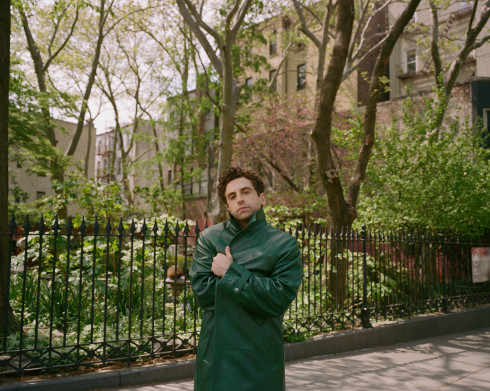
Jacket by Molly Goddard.
- By
- Janelle Anne
- Photography by
- Iringó Demeter
- Styling by
- Rebecca Corbin-Murray
Hair by Susanne Lichtenegger at the Wall Group using Hair by Sam McKnight. Makeup by Martina Lattanzi using Weleda.
Jenna Coleman Goes from Queen Victoria to Distraught Mother
It’s December, a week before Christmas, and the English actress Jenna Coleman finally has some time to herself. “We just wrapped another season of Victoria, which is amazing because I’m home,” she exhales, referring to the PBS series on which she plays the eponymous queen so momentous she had an entire era named after her. “I’m literally cutting up vegetables as I speak to you—in my own clothes for probably the first time this year.”
Coleman has been acting since she was eighteen years old, when she landed a part in the long-running British soap opera Emmerdale. This experience proved more useful than drama school, offering her the opportunity to work with a range of different actors and directors during her four years on the show. Over the course of the last decade, her career has continued to blossom, first as the companion of the eleventh doctor (played by Matt Smith) on the classic series Doctor Who and now as the sex-loving, perennially pregnant young queen in Victoria, which returns for its third season this week. None of this, however, prepared her for her latest role as Joanna.
In the new Sundance Now miniseries The Cry, Coleman’s Joanna is a schoolteacher who falls for Alistair (Ewen Leslie), a media savant with a commanding presence and a way with words that clearly overpower her. After losing their infant son to unforeseen circumstances, the couple face the insatiable media, relentless and untrusting detectives, concerned relatives, and even agitated exes. “I felt like she was the last person in the world who would ever want that kind of attention, especially when we first meet her,” explains Coleman. “She’s kind of small and wearing this gray sweater and wants to curl up into a ball.”
What follows is a whirlwind of events that unfolds quite differently from the book the show is based on. The original author, Helen FitzGerald, revealed the ending on page one, but on screen, the tale is told backwards, using structural devices to recreate the page-turning tension of the novel. Adaptations rarely delve into inner monologues, preferring to show instead of tell, and The Cry more than makes up for the missing omniscient perspective with its subtle, strong performances. “I feel like the script had a really clever way of bringing you close but keeping you really far from everybody the whole way through,” explains Coleman, gingerly trying to avoid spoiling the ending.
“You have to play it two ways all the time: a grieving mother whose child has been snatched out of a car and also the version of a mother sitting on top of all these secrets,” she continues delicately. “The ambiguity and the dueling nature of keeping it a thriller while always telling the truth felt like playing the most vortex-like game of chess I’ve ever played before.”
Coleman herself does not have children, so this role was particularly terrifying for her. She talked with friends who were actors (and also new mothers), who recounted their experiences in incredible detail. She spoke to a midwife about the first few days and weeks of motherhood. And she had the source material to fill in the emotional gaps. But perhaps the most challenging part was connecting the Joanna from the beginning of the story, in that mousy gray sweater, to the Joanna at the end, slightly removed and speaking directly to the camera in a form-fitting red dress. “We purposefully asked the audience to question her role as a mother,” explains Coleman.
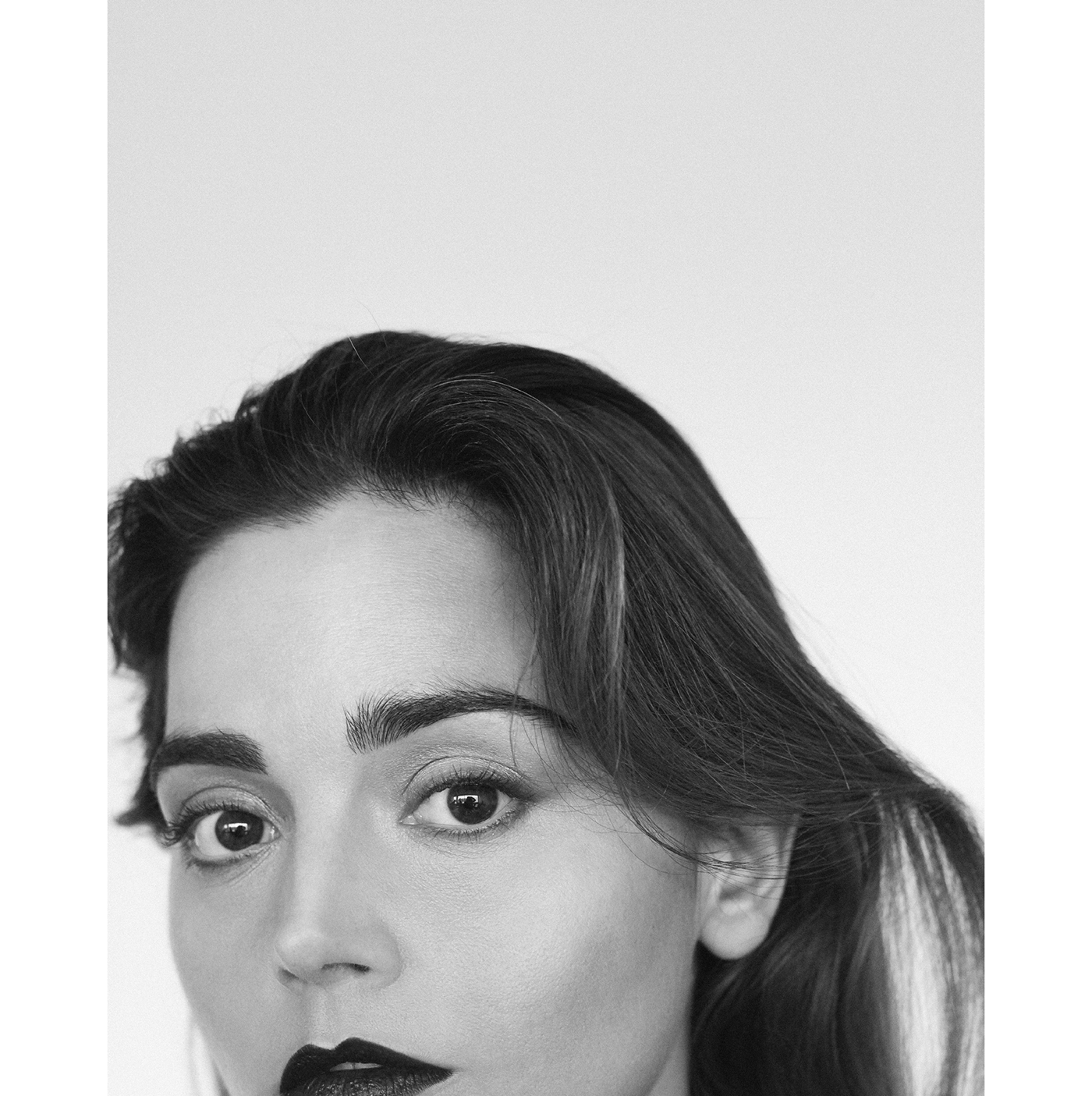
But did the role affect her view on motherhood? “Hugely,” she says, “but I suppose I never really thought about how your whole identity and your whole existence changes because suddenly you’re a mother. Even normal things like waking up in the morning and going out to get a coffee—everything is different. It was a real eye-opener.”
In the most shocking scene, the viewers learn what really happened to Joanna and Alistair’s infant son while they are parked on a roadside outside a small coastal town in Australia. She cries. He cries. She runs into oncoming traffic. He runs after her. The whole sequence is jaw-dropping, powerfully tragic, and painfully believable. “We didn’t rehearse. Nobody really knew what was going to happen,” she recalls of this turning point. “I think it took in real time maybe twenty minutes.” Returning to this pivotal moment later, Coleman adds, “I think when you’ve had a baby for nine months, it has to be a physical reaction as opposed to something more cerebral. You could do lots of prep, but you have to throw that away and not be too cerebral about it because it’s kind of an animalistic thing.”
With the rise of strong female leads, it’s (thankfully) no longer uncommon to see flawed women, especially mothers. Joanna’s story is undeniably dramatic, but postpartum depression does in face affect one in nine women in America and The Cry at least offers some window into the exhausting labor and psychological turmoil that can arise, a refreshingly bracing change for television. “It’s a timely story,” says Coleman, “but ultimately I think people [in the industry] are unafraid of showing real-life portraits.”
The Cry is now streaming on Sundance Now. Victoria returns to PBS on Sunday.
- By
- Janelle Anne
- Photography by
- Iringó Demeter
- Styling by
- Rebecca Corbin-Murray
Hair by Susanne Lichtenegger at the Wall Group using Hair by Sam McKnight. Makeup by Martina Lattanzi using Weleda.
